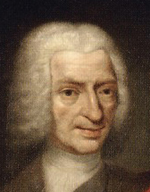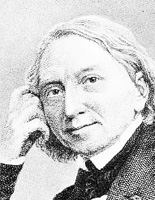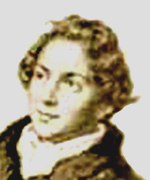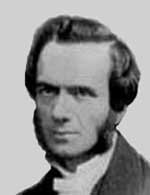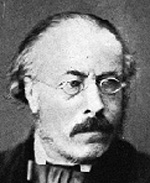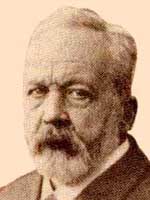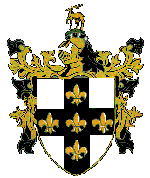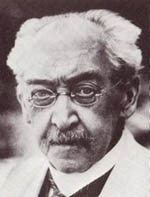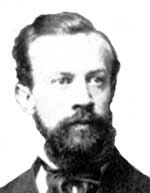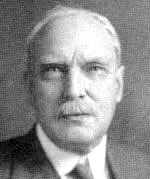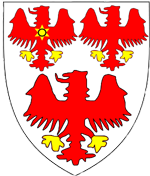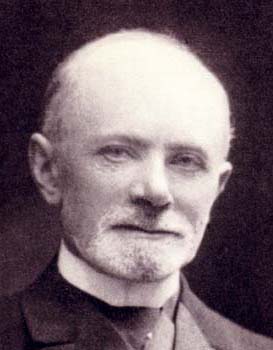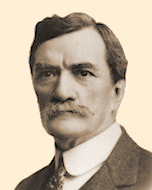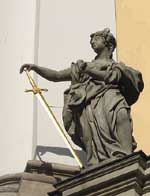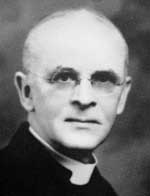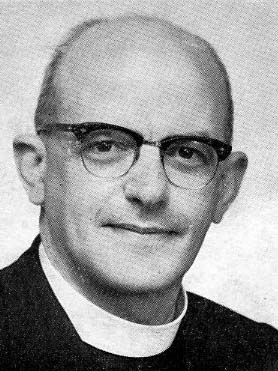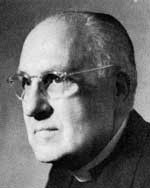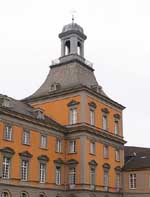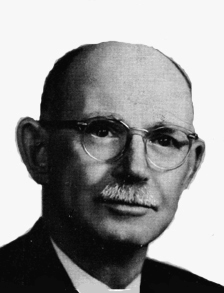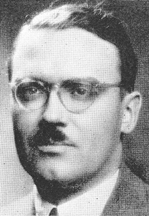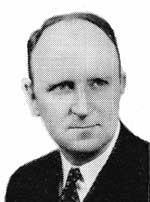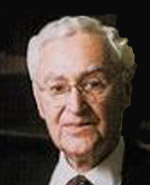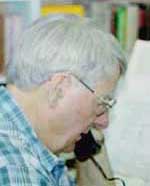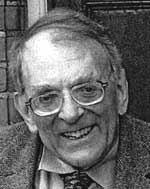New Testament
Festival CalendarThose who come after may well hold in memory the names of those who have gone before. Here is a personal selection from the gallery of the past. To give appropriate time between festivals, we begin on the day after Twelfth Night and proceed in two-week intervals throughout the year. Persons are listed in approximate chronological order. Be it noted that festival days, though not unavailable for feasting, are also considered to be especially propitious for research.
Jan Feb Mar Apr May Jun July Aug Sept Oct Nov Dec
7 January: Hermann Samuel Reimarus (22 Dec 1694 - 1 Mar 1768) was born and died in Hamburg, that great German window on the sea. It was with Reimarus that modern critical NT study really began. His sense of the contradictions of Scripture, and of the need to test Scripture as one would any other historical document, for its own internal contradictions and for its contradiction to the known laws of nature, were worked out in detail but also in secret (even from his family). He saw, even without benefit of a theory of Markan Priority, that the historical Jesus had preached a Messianic doctrine (as Mark makes most clear), and that Resurrection theology was a later development of Jesus's disciples. Reimarus found the Protestant doctrine of inherited sin (the Adam theory) and the vicarious Atonement to be contrary to reason, and devoid of value for humanity. The partial publication of these notes (by Lessing, over the period 1774-1778, after Reimarus' death) is said to have caused widespread loss of faith among the young theologians of the time, which only shows how crudely based was the faith of the young theologians of the time. The world has since somewhat adjusted to the challenge that Reimarus was the first to raise unavoidably, and NT initiates are on the whole somewhat tougher these days, but the problem of the Two Cultures remains, and needs sympathetic handling by all concerned.
21 January: Karl Lachmann (4 March 1793-13 March 1851). Before we can discuss the NT to any effect, we first have to see what the NT actually consists of. Lachmann was the first to realize Bentley's abortive project for a critical text of the Greek New Testament. Lachmann's edition (1831, 3ed 1842-1850) contained an appendix listing the points of departure from the received text; they roughly fulfilled Bentley's prediction that there would be about two thousand of them. This was the first edition to break entirely with previous tradition, abandoning the standard Greek text of the day for the best available manuscripts. Lachmann's principles for deciding between manuscript variants anticipated Streeter's theory of local texts; his advocacy of Markan Priority (based on an argument from order) antedated by three years the more celebrated work of Weisse. NT was only one of his fields of activity; Lachmann also proposed a compositional theory for the Iliad (based on his work with mediaeval German poetry; though in the right direction, it has not been accepted by posterity). In his final work, an edition of Lucretius (1850), Lachmann was able to specify the archetype from which all other manuscripts descended as having 302 pages, with 26 lines to each page. This is rightly regarded by Latinists as an immortal achievement. Of his Homeric proposals, after a dismissive review, Wilamowitz-Moellendorff asked,unanswerably, "But where would be be without Lachmann?" In his NT work, Lachmann saw the issues clearly and met them creditably. He was ahead of his time. But then, the only contribution we can make to the future is to be ahead of our own time.
4 February: Constantin von Tischendorf (18 Jan 1815 - 7 Dec 1874) was the explorer who discovered the Sinaiticus manuscript under the most exciting conditions imaginable, and the diplomat who arranged for its purchase. He was also the editor who published edition after edition of the Greek NT, making prompt use of each new manuscript discovery, as well as critical editions of several important finds of texts outside the NT canon, in the process showing that Lachmann's edition was premature, and that the best possible manuscript foundation had not yet been laid. Tischendorf's third great contribution was in methodology: it was in the 8th edition of his Greek NT that he articulated the principles of manuscript criticism, not only recognizing the rule that "the variant which best explains the others is to be considered the original," which had been stated before him, but explicitly identifying it as the most important principle in the whole field of textual (lower) criticism. To which it need only be added: And in the higher criticism as well. Tischendorf's NT edition would soon be superseded by work for which his own explorations had done much to lay the foundation.
18 February: Brooke Foss Westcott. (12 Jan 1825 - 27 July 1901) and Fenton John Anthony Hort (23 Apr 1828 - 30 Nov 1892) produced in 1881 a critical edition of the Greek New Testament which is still the point of departure for all NT research; the accompanying Introduction, with its notes on selected passages, has also retained its utility. The great difference between their text basis and that of Tischendorf was their use of Codex Vaticanus, an old manuscript in the Vatican Library which had not yet been generally made available to scholars. Vaticanus is now ranked, as it was ranked by Westcott and Hort, as slightly superior to Tischendorf's great find, Codex Sinaiticus. The resulting WH text has been slightly eroded by later scholarship, but in ways that are partly reversible by the informed student (see Metzger). Of the two, Westcott had the more conventional background: Hort began as a botanist, and brought that scientific training to the collaboration. They also projected a series of commentaries on the NT books, some of which appeared, Hort's 1 Peter being still incomplete at the time of his death, was published in that incomplete form. Frank Beare has recorded his sense of loss when, in writing his own 1 Peter commentary, he came to the end of Hort's. Westcott ended his life as Bishop of Durham (in succession to Lightfoot); Hort still as a Cambridge professor. Their work brought to a close what can be called the preparatory period of NT research. The rest of us are their inheritors.
3 March: Heinrich Julius Holtzmann (17 May 1832 - 4 Aug 1910). Holtzmann studied at Heidelberg (from 1850, with a spell at Berlin in 1852), and was awarded a ThD in 1854. After some skirmishes in preaching positions and a temporary position (and an honorary doctorate, 1862) at Vienna, he finally found his niche in academe at Strasbourg (1865, Rector 1878/1879, honorary doctorate 1897). He surveyed previous work with a comprehensive but also comprehending eye; it was his reformulation of the Weisse (1832) Mark/Q theory in his 1863 work on the Synoptic Gospels which made that theory standard issue for later scholars. Among many other works, he published commentaries on Ephesians and Colossians (1872) and the Pastorals (1880). Also significant was his critical introduction to the NT (1885; 3ed 1892). To the Handkommentar series, he contributed the volumes on the Synoptics (1889; 3ed 1901), Acts (1891, 3ed 1901), John (1891; 3ed 1908, edited by Walter Bauer), and the Johannine Epistles and Revelation (1891). All this work shows not only thoroughness (his list of contacts between 1 John and the Gospel of John is an exemplary specimen of how to do it, or at any rate, how to get ready for it), but insight into the meaning of the data. Holtzmann formally retired in 1904. His work is still there.
17 March: Julius Wellhausen (17 May 1844 - 7 Jan 1918). Like Lachmann, Wellhausen left major results in three different areas of textual science. The first third of his career went to unraveling some strands of OT narrative, producing in the process an item of direct interest to NT workers, Pharisees and Sadducees (1874; tr 2001). His large results can be consulted in his popular account, Prolegomena to the History of Ancient Israel (1878; 3ed 1881; tr 1957). The second third was spent on Arabic studies, with a focus on two histories of Islam. The third went to NT, producing slim but cogent commentaries on the key texts: Mark (1903; 2ed 1909), Matthew (1904; 2ed 1919), Luke (1904), an overview Introduction to the First Three Gospels (1905; 2ed 1911); a preparatory volume on Extensions and Alterations in John (1907), and then one on John itself (1908). Acts followed in 1914. There is a survey of Wellhausen's NT work by John Timmer (Julius Wellhausen and the Synoptic Gospels, 1970). It awaits a suitably equipped successor.
31 March: John Hawkins (1837-1929). Hawkins, educated at Oxford, held several clerical positions during 1863-1880 (he was Honorary Canon of St Albans from 1878), but his chief significance for our age is his participation in the Sanday group at Oxford; he took part in Sanday's ongoing seminar from its foundation in 1894, and contributed two papers to the eventual volume, Studies in the Synoptic Problem (1911). His great monument is his own book, Horae Synopticae (1899), a still invaluable collection of formal and statistical observations about the Synoptic Gospels, their probable sources, and their composition (with quite a bit also about Acts). Assembling the data is half of solving the problem, and Hawkins was a master at the assembly of data. He is especially clear about the higher-critical analogue of Tischendorf's Principle: which of two related forms is the more likely to have given rise to the other? After ten years of further careful work on the elements of the Synoptic Problem, Hawkins issued a revised edition of Horae Synopticae in 1909, "to render [the data lists] as nearly complete as possible." His studies underlay much of the argument in Streeter's vastly more influential work The Four Gospels (1924), but the value of Hawkins is not subsumed in Streeter: his work is still the foundation of acquaintance for any who would venture to probe beyond, or around, the position then reached. Said Harnack, never a man overgenerous with praise, "It is impossible to overrate Hawkins." That remains true after a century. As Hawkins remarks in the Preface to his second edition, he rewrote his section on the common non-Markan source of Matthew and Luke, "in order to avoid the appearance of a claim to more certainty than has yet been reached on this subject." Let this reticence not be mistaken for a lack of progress, and let the progress not be construed as an excuse to make no further progress.
14 April: Adolf Harnack (7 May 1851 - 10 July 1930). One always knows where Harnack stands, and if he stands in different places at different times, that merely means that he is keeping his mind open. Not that openness is always productive: the value of first impressions is vividly shown by Harnack's later opinion that Acts must have been written while Paul was still alive, else why did Luke not mention his death? This rather naive lapse notwithstanding, Harnack's thoroughness must remain a model for us lesser beings (he prepared himself for NT study by reading all the contemporary literature in Greek), and his close studies of the Gospels and Acts remain suggestive for modern researchers. He knew where the problems were. In his long tenure at Berlin (where he was appointed in 1888, despite conservative opposition), Harnack had several significant students, among them Adolf Jülicher and Hermann von Soden; he also influenced the young Turk William Wrede. In opposition to the Tübingen school's Peter/Paul opposition model, Harnack regarded Jesus and Paul as preaching the same Gospel, and saw 70 as the end of the primitive period (which for him included nearly all the basic NT writings), and the beginning of "church history," a subject of lifelong interest and the focus of a continuing seminar at Berlin. His Chronologie (dedicated to Wellhausen in 1906 as a 60th birthday tribute), though difficult of access at present, and now requiring modification in detail, is exemplary in principle. And why? Because the NT cannot be solved in pieces, and it cannot be correctly solved unless the pieces fit together chronologically, and give a mutually noncontradictory historical picture. Part of the higher criticism is an understanding of the art of implication.
28 April. William Wrede (10 May 1859 - 23 Nov 1906), and yes, German speakers, Wrede's baptismal name was Friedrich Georg Eduard William. He was born in Hannover, and studied first at Leipzig (1877-1879, where Harnack, who long outlived him, was his chief influence) and then at Göttingen under Ritschl (1879-1880). As an Inspector at the Göttingen Theological Foundation (1884-1886) he became friends with Eichhorn, who directed him away from Ritschl and in a more historical-critical direction. He served a pastorate in 1887-1889, and received his theological degree from Göttingen in 1891, with a dissertation on 1 Clement, already showing a tendency to work beyond the canon and on the entire historical period in which the canonical texts arose. During these years Wrede was influenced by the History of Religion school at Göttingen, including Bousset and Gunkel. He taught at Breslau from 1892 on, receiving a regular (tenured) professorship in 1895. His critical spirit and wide conception of the field surfaced early, in an 1897 work with the revealing title Über Aufgabe und Methode der sogenannten Neutestamentlichen Theologie. It was something of a declaration of independence for historical as against scriptural study of the early Christian documents: "Scholarship has recognized that the old doctrine of inspiration . . . is untenable. For logical thinking, there can be no such thing as a cross between inspired writings and historical documents . . . In view of this, everyone who wishes to concern himself with New Testament theology in a scholarly way must demonstrate first of all that he is capable of concern for historical research. A pure, disinterested concern for knowledge, a concern for every result that emerges, must be his guide. He must be able to distinguish his own thinking from that alien to it; modern ideas from those of the past; he must be able to prevent his own view, however dear, from exerting any influence on the object of research, to hold it, so to speak, in suspension. For he only wishes to discover how things really were." This stance (which was precisely that of von Ranke at Berlin) caused predictable tension on the faculty, and in the Silesian countryside beyond. Wrede was a skilled musician, and for several years directed the University's Institute for Church Music. It was from Breslau that Wrede launched the modern period of NT research with his June 1901 study of the Messianic Secret in Mark, developing in a startling way one of the insights of Reimarus. The immediate effect of this work was to emphasize the shaping hand of the author on the Markan narrative, and thus to reduce confidence in the direct historical value of Mark, and to focus instead on the community for which this and other literary constructs were produced. That there are actually two Messianic Secrets in Mark subtracts exactly nothing from the importance of this work; to each his own century. Wrede followed this influential work with studies of the Thessalonian epistles (1903), which clearly showed the inauthenticity of 2Thess, and of Paul (1904), where he raised the question of the origin of the saviour myth and the place of the justification doctrine within Paul's philosophy. These important beginnings are still being developed at the present time.
12 May. Johannes Weiss (13 Dec 1863-24 Aug 1914) was the son of another eminent German NT scholar, the conservative Bernhard Weiss, who in the end outlived him. The views of Johannes ran in a more liberal direction; that represented by Albrecht Ritschl, whose daughter Johannes eventually married. He was born in Kiel, and studied at Marburg, Berlin, Göttingen, and Breslau. His first teaching posts were at Göttingen (1888, promoted 1890). It was at Göttingen that he and several colleagues (called by some the "junior faculty") came to be known as the founders of the "history of religion school," from their view of Christianity as an evolving religion, and not merely a system of ideas. From that period came the first or pamphlet version of Die Predigt Jesu vom Reiche Gottes (1892, in which he distanced himself from his teacher and father-in-law Albrecht Ritschl, but which he had held back from publication until Ritschl's death), his commentary on Luke in the Meyer series (also 1892), and on the Pastorals in that series (1894). He went to Marburg in 1895, and there produced much, including The Imitation of Christ and Contemporary Preaching (1895) and Contributions to the Study of Pauline Rhetoric and The Purpose and Literary Character of the Book of Acts (both 1897). In 1900 he expanded Die Predigt Jesu to a full-length book and also published a separate refutation of Ritschl, The Idea of the Kingdom of God in Theology. Evidently he considered the point to be important. What exactly was the issue here? Weiss saw Jesus as expecting an imminent end to the world, and thought that Christian ethical teachings were later attributed to him when it became necessary to adjust to the failure of that expectation. He had come to feel that Ritschl's attempt to ground his liberal theology in the NT texts was mistaken, and that the teachings of the Historical Jesus were not adaptable to modern conditions. Weiss found that as Jesus conceived of it, the Kingdom of God is a radically supramundane entity which stands in diametric opposition to this world. This is to say that there can be no talk of an innerworldly development of the Kingdom of God in the mind of Jesus. On the basis of this finding, it seems to follow that the dogmatic religious-ethical application of this idea in recent theology, an application which has completely stripped away the original eschatological-apolyptical meaning of the idea, is unjustified. This "hand grenade tossed into the theological community" (so William Baird) caused great consternation, and produced many reactions; he responded by issuing several short works affirming the importance of faith in Christ: "We ask: in what form should Christ be preached today as the Lord of the church and of the individual Christian? . . . Our leader here cannot be the history Christ, but only the Exalted One, about whom we believe that, if he were among us today, would lead us so as to transform the world according to the ideas that God reveals to us through history." This is one way to salvage Jesus for later Christianity. A major work of the Marburg period was a study of Mark: Das Älteste Evangelium (1903). At one of Mark's sudden scene changes, where in 3:21 Jesus' friends are concerned about him, and then suddenly the scene shifts to the Scribes from Jerusalem who accuse him of sorcery, and then his mother and brothers come to the house to reason with him, Weiss wryly remarks,
Auch zu Hause?
which sufficiently indicates (sometimes a raised eyebrow is as good as a page) the interruptive nature of the Accusation scene. It is an interpolation. This finding, if it had been carried out on the rest of Mark, would have opened the entire Gospel to us, there on the table and ready for a historical reading. This, needless to say, did not happen; the hint was left for later ages to pick up. At Heidelberg, from 1908 on, Weiss continued to be fantastically productive. In 1910 came his commentary on 1 Corinthians, again in the Meyer series, in which he presents the letter as a conflation of several, and carefully distinguishes Greek terms which probably are, and probably are not, derived from contemporary mystery cults. He identifies certain passages as referring to, and opposing, some of the Corinthian factions Paul names. This too was a fruitful beginning. Weiss's last work was the monumental Urchristentum, its last three chapters left unfinished by the author and completed by Rudolf Knopf of Bonn. It was first published in 1914 and translated by "four friends" including Frederick C Grant, in 1937, as The History of Primitive Christianity. It remains the only thing of its kind.
26 May: Benjamin W Bacon (15 Jan 1860 - 1 Feb 1932) never got a PhD (his first jobs after his Yale theology degree were pastorates in Connecticut and New York, and his initial appointment as Buckingham Professor at Yale was probationary), and in his later years joked that he could not pass a Yale PhD exam. Yet he had an astounding knowledge of the relevant sources and contemporary scholarship on them, and was the first American NT scholar of anything like international stature. He was not only aware of Harnack and other continental contemporaries (he was present at the 1913 lecture at which Harnack made the distinction between "the religion of Jesus" and "the religion about Jesus"), but labored on the same scale of energy and erudition. He took the whole of the NT as his territory, but with a special focus on the Gospels: over his career, he produced three books on Mark, two on Matthew (Bacon was the major modern proponent of the Five Discourse structural model of Matthew), and two on John; only Luke seems to have escaped him. Even his popular books (in small format, from commercial publishers, and selling for $1 the volume) are crammed with critical acumen and insight. For taking critical scholarship to the larger public in these works, he was much criticized by his colleagues. One James Denney, speaking of Bacon's 1910 work The Fourth Gospel in Research and Debate, sounded the key objection: "It would be a fine book to go through, a chapter at a time, in a seminary, but the idea of offering it to the lay public to initiate it into the debate is astounding." Bacon himself insisted that those who claimed to know Christ had a duty to know Him intelligently, and his popular works (some of them, like his Sermon on the Mount, 1902, based on lectures to undergraduates) persistently introduced the reading public to new methods of textual criticism and their results. He was sometimes wrongheaded and always overbearing; he retained to the end the discourse style of a varsity running back (which in fact he had been at Harvard; his contemporaries' nickname for him was Freight Train Bacon). But as a conversation partner across the decades, under which conditions the other party can sometimes get a word in, he is endlessly stimulating. There is a study of his career by Roy Harrisville (Benjamin Wisner Bacon: Pioneer in American Biblical Criticism, 1976); He is now out of fashion, but then, so is philology itself - Bacon was among the last to use the term "higher criticism" unashamedly in public print; he opens the Preface to his Sermon on the Mount book, "Teachers of Biblical science are increasingly conscious of the need of a text-book of the higher criticism." Maybe they were, and maybe they weren't, but Bacon proceeded to give it to them. He was in the final analysis a good neighbor: his generous tribute to Loisy, with some of whose conclusions Bacon had independently coincided, deserves to be remembered: "vivant et qui ante nos / nostra iam dixerunt."
9 June: B H Streeter (17 Nov 1874 - 10 Sept 1937). His career runs from Queens College, Oxford, where he was educated, to Queens College, Oxford, where he eventually served as Provost. He had earlier been a a leading member of Sanday's Oxford seminar, a group that also included Hawkins, and contributed an essay of his own to the eventual published set of Oxford Studies (1911). Streeter's later book, The Four Gospels (1924) has been the foundation stone for many following, and a stone of stumbling to those who have failed to consider the many inspired suggestions scattered through it (including an irrefutable though often overlooked observation about the Lukan Great Omission). Not to be missed, though often missed, is his erudite and sensitive survey of the non-NT texts in The Primitive Church (1929). Streeter's less happy inspiration about proto-Luke was worked out, with what to the present writer are self-refuting results, by Vincent Taylor. Streeter had a wide horizon on the practical world. He attended the Institute for Pacific Relations Conference in Kyoto in 1929, and lectured in Japan again in 1931; his Bampton Lectures for 1932 appeared in book form that year as The Buddha and the Christ. Frank Buchanan's Oxford Movement emphasized the reality of God in daily life; one of its central concerns was the question of divine guidance. This topic Streeter addressed in the Warburton Lectures for 1933-1935 and in the resulting book, The God Who Speaks (1936). In the early Thirties he frequently addressed Oxford Movement meetings, three of them in Denmark. His last scholarly production (The Caesarean Text of Matthew and Luke, HTR 1935) was reactive rather than creative. It begins this way: In the January number of the Harvard Theological review, Mr R V G Tasker presents an interesting survey of the quotations from Matthew and Luke in the Demonstratio Evangelica of Eusebius. He concludes that "the evidence does not allow us to say that the text of Fam Theta was the text used by Eusebius for Matthew at Caesarea." I proceed to show that this conclusion is the exact opposite of that to which the evidence actually points. Work which has a defensive perimeter is essentially finished. Streeter and his wife Irene were killed on 10 Sept 1937 when a light Swiss Airlines monoplane in which, "on doctor's orders," they were on their way to a vacation, crashed 25 miles short of the Basle airport.
23 June: Claude G Montefiore (6 June 1858 - 9 July 1938), a grandson of the famous Sir Moses Montefiore, was born in the year when full civil equality was granted to British Jews. He was of delicate health as a child, and educated at home, without seeming to be impeded thereby (it took him all of 8 weeks to learn Greek). He entered the non-sectarian University of London (which had been founded by his grandfather, Sir Isaac Lyon Goldsmid) as 30th out of 300 applicants. In 1878, only seven years after the religious requirement for admission had been abolished, he shifted to Balliol (Oxford), where he worked chiefly under Jowett, taking a First Class in "Greats" or Litterae Humaniores in 1889. He then went to study Judaism under Schechter at the Hochschule in Berlin, at first thinking to become a rabbi, but the world of learning proved to be the more appealing. Montefiore was wealthy by inheritance, and spent his life in scholarship, philanthropy, and leadership in the liberal Jewish movement of the early 20th century. His integral two-volume commentary on the Synoptic Gospels was completed in 1909 (2ed 1927), a year after that of Loisy. Montefiore was himself modest about it - "It says about four or five useful things, I think"). It is a monument of a very special kind; sympathetic to the message of Jesus while not accepting the divine claims made on his behalf by his later enthusiasts. His close associate Israel Abrahams was to have contributed parallel volumes on Jewish tradition, but the work was too much (Montefiore and Abrahams had earlier founded and edited the Jewish Quarterly Review, but relinquished control due to overwork at this time). The two Abrahams volumes later appeared separately, as Two Studies in Pharisaism and the Gospels (1917 and 1924); they do indeed make a valuable and permanent complement to Montefiore's commentary. That commentary itself is unique: critical as well as perceptive. From his Jewish perspective, Montefiore recognizes things that another reader might pass by unawares, like the unmusical Polish diplomat of my acquaintance who dozed through a performance of Chopin's Sonata in B Minor, but on awakening remarked, "I know the words to all those tunes." Montefiore knew the words to many of the tunes, and fortunate are those who have taken the time to learn those words from him.
7 July: Alfred Loisy (28 Feb 1857 - 1 June 1940), the most celebrated of the late 19th and early 20th century Catholic Modernists. After his ordination as a priest (1879), he became a Professor of Hebrew at the Institut Catholique in Paris (1881). His first publications concerned the Hebrew Bible; among other things, he held that the Pentateuch was not the work of Moses. Ecclesiastical pressure on this kind of thing increased, and found an official voice in November 1893, in the encyclical Providentissimus Deus ("On the Study of the Holy Scriptures") by Pope Leo XII, which explicitly condemned the higher criticism of which Loisy was a leading figure. Loisy was dismissed from his position in that year, and became instead a chaplain at the nearby Franciscan convent at Neuilly-sur-Seine. Resigning due to illness, he began in 1900 to lecture at the secular École Pratique des Hautes Études. From 1902 he was influenced by the work of Harnack, who felt (with many Protestants) that the church was unnecessary as a mediator between God and man. In his book L'Évangile et l'Église (1902), and in his famous maxim, "Jésus annonçait le Royaume et c'est l'Église qui est venue" ("Jesus proclaimed the Kingdom, and it was the Church that came"), Loisy took a different view: Christianity had evolved, but Jesus had predicted the church; Loisy himself compares his position to that of the Anglican turned Catholic, John Henry Newman. In 1907, Loisy retired to Ceffonds in the diocese of Langres, near his birthplace. Official disapproval followed him; in July 1907 Pope Pius X signed the decree Lamentabili Sane Exitu ("A Lamentable Departure"), followed shortly by the encyclical Pascendi Dominici Gregis ("Feeding the Lord's Flock"), which characterized Modernism as the sum of all heresies. Loisy's two-volume Synoptic commentary, Les Évangiles Synoptiques (1908), which appeared the following year, was the occasion of his formal excommunication, on 7 March 1908. To the credit of France, he was given the chair of History of Religions at the Collège de France; his inaugural lecture of 24 April 1909 was published that same year. In the following years appeared most of his major commentaries, beginning with that on Mark in 1912. He was not slow to take his own side against the Catholic hierarchy, as witness Choses Passées (1913, translated in 1924 as My Duel With the Vatican: The Autobiography of a Catholic Modernist). World War 1 inspired his work Guerre et Religion (1915, translated that same year), but though Ceffonds was only 50 miles from the trenches at Verdun, the war affected him little, and his commentary on Galatians followed in 1916. His Acts commentary appeared in 1920, the Apocalypse of John in 1923, and Luke in 1924, along with a more general work, Religion et Humanité (1926). By this time, Loisy had become something of a hero to the modernist wing of Christian scholarship. In 1927, the Congrès d'Histoire du Christianisme assembled at Paris in the week after Easter in honor of his 70th birthday; Loisy, who had been much influenced by such German scholars as Harnack and Jülicher, felt particularly honored by the fact that four German universities were represented at the Congrès. Next year appeared Morale Humaine (1928). Loisy held his position at the College de France until 1931; in 1932, all of his writings up to that time were placed on the Index. In his last years he returned to general questions in Birth of Christianity (1933) and Origin of the New Testament (1936), the works by which he is now best known, following their 1950 translation by Jacks. A late statement of his increasingly extreme position on the central belief of the Church was Histoire et Mythe à propos de Jésus-Christ (1938). Time was flowing in Loisy's direction, albeit a little too slowly. In 1943, in the encyclical Divino Afflante Spiritu ("Inspired by the Holy Spirit"), Pope Pius XII recommended translation of the Bible from the original languages, thus abandoning the previous official adherence to Jerome's Latin translation, and went on to allow that knowledge of the original languages should be augmented by "a real skill in literary criticism of the text." The date of this proclamation was intentional; it followed by exactly 50 years the anti-Modernist tract Providentissimus Deus of 1893, which had explicitly condemned the higher criticism, and had made formal the official Catholic disapproval of Loisy and others. Loisy himself had then been dead for three years, a fact which itself may have been an inspiration for the 1943 pronouncement; it is easier to acknowledge the merit of a dead enemy than a live one. Controversies have only losers, and scholarship is the major loser in the saga of Loisy versus the so-called Church. His heritage is still being debated; it probably lies in the Mark, Luke, and Acts commentaries of his Collège de France period, which display consistent insight into the texture of those texts. Paul he did not like, and a willingness to see beyond Paul is a useful piece of equipment for anyone who would learn what else besides Paul was going on in early Christianity. When that still obscure matter finally becomes clearer, it is probable that Loisy's star, perhaps even his constellation, will be visible in the firmament.
21 July: James Moffatt (4 July 1870 - 27 June 1944) was born in Glasgow. After an education at the University of Glasgow, he began by serving several parishes in Scotland, and by seeking to bring the Bible to an even wider audience with his own new translation, The NT portion of this translation appeared in 1901, with a 3rd edition in 1918. His literary side shows also in his book on the British novelist George Meredith (subtitle: A Primer to the Novels), published in 1909, the year of Meredith's death. His staggeringly erudite Introduction to the Literature of the New Testament (1911, 3ed 1918) seems to have led to an appointment as Professor of New Testament at Mansfield College, Oxford (1911-1915). Not every position in this work can be taken as final (Moffatt accepted Colossians and 2 Thessalonians, not to mention 1 Peter, as authentic), but exposure to Moffatt's range of acquaintance and precision of thought are still useful for the student, and which of us is not a student? As a gesture to the literature of his homeland, Moffatt wrote The Bible in Scots Literature (1924). In that same year appeared his commentary on Hebrews in the notable International Critical Commentary series. But the tides were now flowing in a somewhat different direction. In 1927, Moffatt moved to New York, to assume the Washburn Professorship of Church History at Union Theological Seminary. From the following year, 1928, there began to appear the series of commentaries based on Moffatt's own NT translation, with contributors from America (including his Union colleague E F Scott) as well as from Greater Britain. The first of the eventual seventeen volumes were Theodore H Robinson on Matthew, J Hugh Michael on Philippians, and Moffatt's own commentary on the General Epistles, all in 1928. G H C MacGregor on John followed in 1929. The series maintained a remarkably high standard, the volumes on Romans (C H Dodd, 1932) and on Mark (B Harvie Branscomb, 1937) being particularly outstanding. Also in his time at Union, Moffatt was in charge of the NT committee for the Revised Standard Version of the Bible, thus dealing in parallel with another and rather differently motivated translation effort. Reports William Baird, "When one of the members of the committee pointed out that a rendering that Moffatt had opposed in the deliberations had actually been taken from Moffatt's own New Testament, he replied, Well, that phrase was right for my translation, but it will not do for this." After Moffatt's death in 1944, the RSV still being in process of becoming, that committee met instead in the office of his younger colleague, Frederick Grant. It turns out that there were nine chairs, rather than the Markan Twelve, around that table. No one was better prepared to occupy one of them than Moffatt. His own commentary series also outlived him. The volume on the Johannine Epistles by C H Dodd (1946) carried this dedication: "In Piam Memoriam / Praeclari Scriptvrarvm Sacrarvm Interpretis / Qui Commentariorvm Hanc Seriem / Consilio Institvit / Ivdicio Direxit / Nomine Ornavit / IACOBI MOFFATT / Inter Labores Defvncti / Hoc Opvscvlvm / Ipsivs Nvtv Inceptvm / Tandem Absolvtvm Dicat Avctor." The last of the Moffatt New Testament Commentary series, fittingly enough, was contributed from Scotland by William Neil of King's College, Aberdeen. It dealt with Thessalonians, and in a long introduction took up the challenges made against the authenticity of both letters. The case against 1 Thess was quickly disposed of, but as Neil remarks, "Unlike that of the first epistle, the authenticity of the second still presents a problem." The points made against it are reviewed on the following seven (!) pages. On the eighth, Neil concludes, "Critical study of the text, therefore, points to the fact that though on many points concerning 2 Thessalonians we are still in need of enlightenment, there is no solution other than the orthodox view which does not raise more questions than it solves." Thus did the great ship of Moffatt's commentary series at last reach port in 1950, with its founder's views on Thessalonians wave-battered, but in the view of the series itself, intact.
4 August: Ernst Lohmeyer (8 July 1890 - 19 Sept 1946) studied at Berlin (ThD 1912) and Erlangen (PhD 1914), and became a professor at Breslau (1920); he was removed in 1935 and reassigned to the still honorable but lesser post of Greifswald because of his anti-Nazi sympathies. He was due to begin teaching at Breslau after the war, when he was arrested (February 1946) and later executed by the Soviet police. His works are pathbreaking in several directions, many of them shedding light on the earliest Christianity. They include the recognition of a pre-Pauline hymn in Philippians 2 (Kyrios Jesus, 1928; this work inaugurated the study of embedded hymns in general); his recognition of the importance of Galilee in both the life and death of Jesus (1936, a fact obscured in the later Gospels and especially in Acts); the associated full commentary on Mark (1937); and his long study of the Lord's Prayer (1946). An unfinished commentary on Matthew (which perhaps less usefully challenged the dependence of Matthew on Mark) was completed and published after his death (1956). Several smaller studies are collected in Urchristliche Mystik (1956). Lohmeyer's work thus presents a continuously interrupted quality, but all of us are going to be interrupted sooner or later. Let us at least leave the finished part in usable form.
18 August: Burton Scott Easton (4 Dec 1877 - 7 Mar 1950) began as a mathematician (BS 1898, Penn; teaching at Iowa 1898-1899 and Penn 1901-1905). Having continued his theological studies at Penn, he was ordained in 1905 (formally receiving his BD degree in 1906), and began teaching NT at Nashotah House in Wisconsin from that year. These were exciting times for Continental NT studies, and for those keeping track of them. Easton's home at Nashotah (especially following his marriage in 1908) was later remembered as a center of hospitality, but one which also projected an atmosphere of intense study: "The light from his green-shaded study lamp could be seen all the way to the cloister, and many a night it burned until one or two." In those years, Easton read through Meyer and Zahn, but also Johannes Weiss, Loisy, and Holtzmann, as well as the commentaries of Swete (Mark) and McNeile (Matthew), taking intricate notes and reducing what he found to an orderly form. There was intense interest at the school in the newest European scholarship: "The arrival of a new commentary from Berlin or Göttingen, Oxford or Cambridge, was an event marked by forty days of celebration: [OT Professor] Fosbrooke would read it, then Easton, then any other faculty member who was interested, then some learned Senior. Middlers and Juniors heard about it, or perhaps were even permitted to hold the precious volume in their hands." Easton received the STD degree from the Philadelphia Divinity School in 1910, and in 1911 he became Professor of New Testament at Western Theological Seminary in Chicago (the institution that was to be merged with Seabury in 1933 by Frederick Grant, who had earlier been one of Easton's students). Easton's serious publications began at this time. In 1918 he founded, and became chief editor of, the Anglican Theological Review; an editorial connection which he continued to the end of his life. The following year, Easton moved to the New Testament chair at General Theological Seminary, where he remained until retirement. Besides his Notes and Comments in the Review (which continued until 1937), and a large quantity of writing for the wider religious public, he produced two major commentaries. The first of these was on Luke (1926) and was soon followed by the Synoptic analysis in The Gospel Before the Gospels (1928), a critical exposition of the Formgeschichte movement and its results. A smaller but equally incisive work on The Purpose of Acts appeared in 1936. Easton in this period had become increasingly interested in church history and especially church liturgy, and the first fruit of this interest was a study of The Apostolic Tradition of Hippolytus (1934), a witness to Roman liturgical usages as of the composition date of Hippolytus' work, c217. Easton's interest in church order culminated in his commentary on the Pastoral Epistles (1947). He took as established the 1921 results of Harrison, who had found genuine cores in these otherwise spurious epistles, and went on from there. Not much time now remained to him. His earlier work on Luke and the Pastorals had, as it were, skirted the edges of Pauline orthodoxy. In his commentary on the Epistle of James (which appeared only after his death, in v12 of the Interpreter's Bible, 1957), having made Euclidean short work of the idea that the Lord's Brother could have written it, and having disposed also of the idea that the Epistle represents the reactionary full-law "Jewish Christian" stance of Matthew, he correctly locates it in what he calls "the broad and nonpartisan center of non-imaginative but earnest and common Greek-speaking Christians." Or, as the present writer would put it, the Epistle is a primary document of Alpha Christianity. It was most suitable for a mathematician to end his contribution to NT studies by locating this vital "center." Easton's former student Grant oversaw a memorial republication of Easton's work on Acts, along with edited versions of several papers on Early Christianity, including what was probably his final manuscript, in a volume entitled Early Christianity (1954). Grant's appreciation of Easton, on which this profile has drawn, supplies a prefatory Life and Work to that volume.
1 September: C Leslie Mitton. There are lives like mountain ranges (Lachmann, Wellhausen, Harnack), which produce a series of important works, and there are others like floodplains, where nothing much happens. But sometimes above a stretch of plain there towers one incongruous height of achievement, like the one string quartet of which Debussy was capable. Such is Mitton's commentary on Ephesians (1951), essentially his London dissertation minus two chapters. The book resulting from the dissertation had other help as well. Says Mitton in his Preface, "I owe a very special debt of gratitude to Rev Dr Vincent Taylor, not only for constant and valuable advice during all the stages of preparing this book, but also for his untiring encouragement over a period of twenty years, during which he has never failed to provide the intellectual stimulus necessary to enable me to maintain habits of study amid the busy life of a circuit minister in the Methodist Church." Mitton follows Harrison into the relations between Ephesians and the Pastorals, takes up the priority of Colossians to Ephesians (a necessary step in the web of the final NT chronology), and of special importance, the relation of Ephesians to Acts. He follows up Knox on the position of Philemon, as well as Beare on 1 Peter. Some of us are steady; some of us are sporadic. The Ephesians was the only thing of worth Mitton ever did (his commentary on James, from 1966, is nothing to throw a party for), but that one thing is packed with edification and example for the serious NT researcher. It will serve.
15 September:Vincent Taylor (1887-1968) was another Methodist circuit preacher (from 1906) who became one of the major NT commentators. His working out of Streeter's Proto-Luke hypothesis (The First Draft of Luke's Gospel, 1927) is unconvincing, but it shows at least the disposition to explore the consequences of an idea. Synoptic matters were further considered in The Formation of the Gospel Tradition (1933). His Mark commentary, written in difficult circumstances over the war years and finally published in 1952, is of a different order entirely: it remains to the present day the Mark commentary against which newcomers to this now crowded field are compared. It includes, for example, in one of its Appendices, a cogent analysis of Mk 13 as an accretional text, an insight on which a full understanding of Mark may yet be erected. Other Synoptic studies, on the content and order of Q, and on the Matthean and Lukan Sermons, are collected in the posthumous volume New Testament Essays (1970). These include an attack on the work of Loisy, and in particular on Loisy's views on Luke-Acts, in which Taylor's emotions got the better of his critical sense. Among Britons, though, Taylor's judgement was sounder; he was a friend and patron of his fellow Methodist Leslie Mitton, whose Ephesians commentary abundantly justified the friendship and the patronage, and whose memorial address was prefaced to the Taylor Essays volume.
29 September: Frederick C Grant (2 Feb 1891 - 11 July 1974). A deadly boring lecturer (his textbook Introduction to New Testament Thought, 1950, is not a very sprightly volume either). But he was a good administrator (he engineered the merger of Seabury and Western in 1933, with himself continuing as President of the combined institution) and an admirable companion in study, whether with his academic colleagues in formal collaboration, as on the translation "by four friends" (himself, Arthur Haire Forster, Paul Stevens Kramer, and Sherman Elbridge Johnson) of Johannes Weiss's History of Primitive Christianity (1937), or in more informal contexts, especially in his years at Union Theological Seminary, from 1939 on. One student recalls this 1958 moment, "We were sitting around "the table" in the seminar when once again we had gotten him off his prepared presentation and as he was chatting about whatever the topic was, he was reminded of a letter he had recently received from Dodd, which he proceeded to take from his coat pocket and read to us; this was one of my first inklings that I was touching what amounted to an international fraternity of colleagues and friends." Grant did the Mark commentary for the Interpreter's Bible series (1951), and published often on Mark and kindred subjects (The Growth of the Gospels, 1933; The Earliest Gospel, 1943; The Gospels: Their Origin and Growth, 1957), all these works being distinguished by insight, a sense of proportion, and clear presentation. None of this solved the problem of the earliest testimony to Jesus and his first followers, but it helped to clear the previous ground, and it did much to define the sort of collegial context in which advances are most likely to be made. On the death of his senior colleague Moffatt, the nine members of the NT committee for the Revised Standard Version began to meet in Grant's office at Union (at almost the end of the Committee's labors, the group included Frank Beare, who was spending that year working on his 1 Peter commentary at Union). Grant had his down-to-earth moments. Robert Gundry recalls how, at a lecture in England, Grant displayed "his Yankee ingenuity in raising the level of the lectern, from which he was to speak, after the Brits had fumblingly failed several times." A certain Yankee individualism, a tendency to see things for oneself, and not to get caught up in other people's theories, was noted by his old friend Sherman Johnson in his Forward to the 60th birthday Festschrift, The Joy of Study (1951): "He does not belong to any one school or party. After 1914 the writings of Wrede and Schweitzer burst like a bombshell on English and American scholarship; he learned from the eschatological movement but was not carried way . . . He has accepted the basic methods of form criticism, but has worked out the details in his own way." The best tribute to Grant's knack for collaborative friendship remains the "four friends" translation of Weiss, in 1937, or maybe it is Grant's preface to the republication of some of Burton Scott Easton's shorter works (Early Christianity, 1954). Grant's retirement party (1959) was held at St John's Cathedral. Even during the festivities, he made a point of introducing his friends (among them Morton Enslin) to his students, keeping up to the last the role of intermediary between the continents and the generations. A good administrator is one in whose vicinity good things happen. Grant would seem to pass that test.
13 October: Philipp Vielhauer (3 Dec 1914 - 23 Dec 1977). Born in Bali as the son of missionaries, Vielhauer was educated in Germany at Marburg and elsewhere. He was expelled from the Baden church for refusing to take the Hitler oath (1931), but was accepted by the church in Württemburg (1935), where he served until drafted in 1941; he was severely wounded on the Russian front in 1942. After the war, he taught briefly at Göttingen (1947) but chiefly at Bonn (from 1950 until his death in 1977). Like Lohmeyer, whose career was somewhat parallel, he specialized in early Christianity. His output is mostly in shorter articles (some of them collected in two sets of Aufsätze, 1965 and posthumously in 1979), one of which, Zum "Paulinismus" der Apostelgeschicthe (1950, English translation in Keck and Martyn, Studies in Luke-Acts, 1966) made the important point that the author of Acts knew at least some of the letters of Paul; here is one of several occasions on which this insight was gained for scholarship. Vielhauer's major work is the mature overview Geschichte der Urchristlichen Literatur (1975), which ranges beyond the NT texts into apocrypha (the Gospel of Thomas) and early Patristic texts (1 Clement). The problems ultimately cannot be solved without considering all of them together. To this truism, Vielhauer has here provided a sort of roadmap of the territory.
27 October: Morton Scott Enslin (8 March 1897 - 14 Dec 1980). Enslin, a Somerville native, started his education at Harvard (AB 1919, following two years of active duty in the Navy at the end of WW1), received a BD from what was then the Newton Theological institution in 1922, and a ThD from Harvard in 1924. In that year, he joined the faculty of the Crozer Theological Seminary in Chester Pennsylvania as Professor of New Testament Literature, and was instrumental in founding the Crozer Theological Quarterly. From 1925 he served in parallel as Lecturer in Patristics in the University of Pennsylvania graduate school. His scholarly writings began to appear soon after, with an article on Paul and Gamaliel (Journal of Religion, 1927), which inaugurated a lifelong study of the complex Luke/Paul/Acts problem; he came down definitively on the side of Paul as against Acts. In 1928, in the Journal of Biblical Literature, there followed an article showing that the Ascension of Jesus (as an event separate from his posthumous Appearance) is virtually unique to Luke, and cannot be taken as strictly historical. Enslin was a Visiting Professor at the Chicago Theological Seminary in summer 1929, in which year also appeared a piece on the Historical Jesus (in the Chicago-based Journal of Religion); it began: "It is fast becoming a truism among New Testament critics that it is a hopeless task to attempt to write a life or history of Jesus in any approved sense of these terms. The materials for such a study are totally inadequate." He goes on to quote Easton approvingly, and ends by suspecting that Acts "would appear to give us aid in detecting genuine historical tradition in the Gospel accounts." This habit of reading the texts together, and not in isolation, was the key to Enslin's progress. He welcomed the massive study of Foakes-Jackson and Lake (The Beginnings of Christianity, 5v, 1920-1933) upon the appearance of the last two volumes in 1933, but at the same time put on record his own doubts about Acts: ""My own impression from an almost microscopic study of the volumes is an increased doubt as to the accuracy of the book of Acts as history." As for Luke and Paul, or for the author of Acts, whoever he was, and Paul, "The evident admiration of the author for Paul, and the fact that he devoted half his volume to a chronicle of Paul's experiences make it to me unthinkable that he was unacquainted with his letters." a position later reached also by Vielhauer. Still more presciently, he predicts that "we shall awake some morning to find that it has become orthodox again to believe that Luke actually used Matthew." Evidently inspired by Jackson-Lake, and without being in doubt as to the work still to be done in these areas, Enslin produced his own three-volume work on Christian Beginnings in 1938, widely used as a textbook and successful also with the general public, in which the material on early Judaism was twice as extensive as that on early Christianity, and the following survey of Christian literature was larger than both together. This was Enslin's summa, but not his conclusion. He returned to the core problem of Luke by noting one of Luke's symbolic usages in Luke and the Samaritans (Harvard Theological Review, 1943), concluding that piece with this comment on Luke's story of the Ten Lepers, "Thus it would appear entirely unnecessary to look beyond Luke's own ingenuity for this story." There, following up previous suggestions, and more than a decade before Austin Farrer's Dispensing with Q paper of 1955, was sounded the death knell not only of Q, but of Luke's other fictitious source, L. That same year, Enslin tried to extract a shred of history from Acts in The Sequence of Events in Acts 9-15 and the Career of Peter, remarking at one point, "It is not difficult do discern that the order of events is almost totally dislocated throughout this section of Acts." This steady pursuit of truth in or despite scripture did not pass unnoticed. In 1945 Enslin became the President of the Society of Biblical Literature, and was also awarded an honorary DD by Colby College. His SBL Presidential Address on the Future of Biblical studies, as he wasted no time in noting, should actually have been called Is There a Future for Biblical Studies? He went on to say, "To me this is a very real question, and I confess that I do not know the answer. I see perils all along the line, and I am increasingly pessimistic as to the outcome." And again, "One final word. What about our students? Are we training men to be ready for these tasks awaiting American scholarship? Frankly, I doubt it. The majority of my students are unable even to make effective use of Hebrew and Greek, know little German and less Latin. . . I shiver at the type of student we seem to be attracting. Granted that many of them will make faithful and not ineffective pastors, but where are the men to come from to do the work which is singularly elusive to the man whose professional equipment does not extent beyond a round full voice, the ability to provide an hour's retreat from reality once a week, and a perspiring readiness to apply his monkey wrench to all the sexual maladjustments in his larger parish?" This was accurately enough observed, but all the same, these are not terms of endearment to the traditionally minded. Enslin's contribution to the 1951 Grant Festschrift was a word to preachers, in which he took very much Bacon's position on the need to educate a congregation in the modern understanding of Scripture. "For a man to be in a pulpit for five years, and to say of findings of scholarship, I agree with this, but I can't present it to my people, for they are not ready for it, is to convict himself of utter incompetence." This was in 1951. In 1954, after a year at Drew Theological Seminary, Enslin was dismissed from the largely Baptist Crozer for his Christological inadequacies, after a full thirty years there. In 1955 he took a position as Craig Professor of Biblical Languages and Literature at the Universalist St Lawrence University Theological School in Canton, New York. The Universalists gave Enslin a wide forum; his book From Jesus to the Gospels was based on lectures delivered at the University of Minnesota under the sponsorship of the Minnesota Unitarian Universalist College Centers Committee, repeated two years later at the All Souls Unitarian Church of Tulsa Oklahoma. The last chapter, in which Enslin wryly noted the persistence of pagan myths (like that of Hippolytus) under Christian guise, gave him a perfect opportunity to note what had happened to serious scholarship at Crozer, and in particular to the journal he had founded there, since his departure: "In the concluding lecture I have made considerable use of an earlier lecture which I delivered at Crozer Theological Seminary when I was a professor there, and which was subsequently published in the now extinct Crozer Quarterly, Vol XXVI, No 1 (January, 1950), perhaps because I was then its editor. It is a pleasant duty to express my thanks to the present administration of that school for permission to use that copyrighted material, a courtesy reminiscent of past years." That book came out in 1964, the year in which Enslin was awarded an honorary DHL by Hebrew Union College. Enslin's association with St Lawrence ended the following year, when the Theology School itself went out of existence, due to the consolidation of the Universalist Church of America and the American Unitarian Association. After a summer at the Iliff School of Theology in Denver, Enslin was taken on as a Visiting Lecturer (but also Chairman) in the Department of the History of Religion at Bryn Mawr, from 1965 to 1968. From this period comes Enslin's Prolegomenon to the reissue of Israel Abrahams' Studies in Pharisaism and the Gospels, originally meant as a companion to the Montefiore commentary. Enslin's study of Luke and Matthew (Jewish Quarterly Review, 1967), which probes the relationship of the two Gospels, showing in fine detail how Matthean material has been reshaped by Luke, but also leaving open the possibility that Matthew was not Luke's only non-Markan source. This was followed by a final period at Dropsie, where he held a Professorship from 1968 until his death in 1980. One of its first fruits was his edition of the Hebrew and Greek texts of Judith, with an introduction and appendices by Solomon Zeitlin, which came out in 1972. That same year, as though to mark the effective end of his period of active scholarship, appeared a Festschrift (Understanding the Sacred Text), with Frank Beare among the contributors. As autumn comes again to the NT workers, let them remember the dangers of their calling, and at the same time appreciate the richness of its harvest.
10 November: Frank Beare (16 August 1902 - 14 May 1986), like Morton Enslin, came to NT via classical Greek, often a propitious beginning. In a 1943 article on the problem of the Historical Peter, which is that there are no primary materials for the Historical Peter (whereas the voluble Paul is known to us through his own letters "with a clearness that can scarcely be paralleled in any other figure of ancient times except Cicero"), he attempts to detect something of truth behind the sequence of events in Acts 9-15; that is, in the latter portion of Acts I. That search continues, and it may be that there is something in there somewhere. Beare continued it with work on the primary NT document, 1 Peter. From the Presbyterian College, Montreal, from which the Acts article was written, Beare went to Union Theological in New York, where he was Visiting Lecturer in the 1944-1945 session, worked on 1 Peter, and joined Grant on the RSV committee, whose work was published in 1946. Then to Chicago, where he finished the 1 Peter commentary in the summer of 1945 (published 1947; 2ed 1958, 3ed 1970). It earned him a Chicago PhD. In his Preface, Beare mentioned Hort's fragmentary 1 Peter commentary with great appreciation , but continued in the next paragraph: "I have not found it possible, however, to follow him in accepting the authenticity of the Epistle. The English reader is here offered for the first time a commentary (in my own treatment of this book, I have found his work of inestimable value for the portion which it covers, and have felt the lack of any equally sure guide from the point at which his commentary leaves off) based upon the thesis, now widely accepted, that First Peter is a pseudonymous work of the post-Apostolic age." While Beare's 1 Peter commentary was still making its way through the press, there appeared Dean Selwyn's 1 Peter commentary (1946, rev 1947, frequently reprinted thereafter), which came down firmly for authenticity. Newly arrived at Trinity College, Toronto (where, as Eugene Fairweather was later to recall, "he blew into our Gothic halls like a fresh ocean breeze"), Beare reviewed this work in its year of publication and in terms of elaborate respect, reserving his doubts about Selwyn's acceptance of the Silvanus variant of the authenticity position to one sentence ("This reviewer does not find the evidence convincing") and to two following paragraphs, the second of which concludes: "I Peter has in fact more verbal points of contact with the Pauline speeches in Acts than with the Petrine; and few scholars any longer credit Peter with any particular responsibility for Mark's Gospel. Besides, along this line of argument, how are we to account for the fact that where the influence of verba Christi is definite and unmistakable, the words invariably take us back to the Gospel according to St Matthew, with which no one supposes Peter to have had anything to do?" Thus were the battle lines drawn, and there they would remain for the next quarter of a century. A problem closely related to 1 Peter is that of Ephesians. Beare much admired Mitton's 1951 study of Ephesians, and said in a review of 1953 that Mitton's tabular presentation of the data , and his "attention to the conflation in Ephesians of passages from different epistles of the corpus . . . reveal an unbridgeable gap between Eph and the genuine epistles." Not less important to Beare was Mitton's treatment of the Ephesians / 1 Peter relation, which in Beare's words "appears to remove the most cherished prop which has been used to support the authenticity of this epistle." This support was the more welcome, in that the 1951 Festschrift for Grant (to which Beare himself, by then located at Trinity College, Toronto, had contributed) included a paper by Philip Carrington, Archbishop of Quebec, taking up Selwyn and Beare by name, and opting for Selwyn and for the genuineness of 1 Peter. As for Ephesians, Beare's own commentary came out in the Interpreter's Bible series in the same year as his review of Mitton (1953). Other commentaries from this period are on the closely related Colossians (Interpreter's Bible, 1955) and somewhat later, on Philippians (1959, 3ed 1988). Beare's unpretentious 1962 work, The Earliest Records of Jesus, was meant to accompany the Huck Synopsis (whose English-only American version by Throckmorton had reached its 2nd edition in 1957). He took pains to deny any high-level intentions for this work: "These notes are intended to serve as a companion to the Huck Synopsis. They are not meant to offer anything like a commentary on the first three Gospels." But in a user-friendly sort of way, that is exactly what they are. Let the two-volume Synoptic commentaries of Loisy and of Montefiore be kept in remembrance by the serious student, who at the same time might also keep this very accessible volume handy. Following up this perhaps preparatory overview, Beare began to work steadily on Matthew, of whose importance for the Peter question he had hinted in his review of Selwyn. In the 3rd edition of his 1 Peter commentary (1970), Beare had his chance to reply to the traditionalist view of the Selwyn commentary of 1946 (last reprint, 1964), and to the 1951 remarks of Carrington. He did so in a Supplement which, for those who know which way is up philologically, effectively demolishes the authenticity position. After Beare's retirement, there appeared his commentary on Matthew (1981), based on studies "pursued unremittingly over a period of fifteen years." It was sneered at on publication as merely reflecting the outdated views of Bacon (Kingsbury, 1984) or, with the 1982 commentary of Gundry, as generally inattentive to contemporary methods (Smith, 1984). Given what was there meant by "contemporary methods," one can only say, Thank Goodness. Beare himself found Matthew anything but attractive: "Matthew has given us a grim book, singularly lacking in those notes of joy that sound through the writings of Luke. The Christ that he presents is on the whole a terrifying figure. It is Matthew above all who has inspired the Christus Pantocrator of Byzantine domes and apses. There is little trace here of a gospel of grace abounding to the chief of sinners." Such was Beare's reaction to his time spent in what was after all the home territory of the high churchmen of his own and all other centuries: the zone of comfort for his steady enemies, the Deans and Archbishops of this world. In details, and true to the approach of his earlier Earliest Records commentary, Beare continually juxtaposes Matthew with the parallels in Luke, to the profit of our understanding of both, a feature not noticed by the reviewers, but revolutionary in its implications. The revolution consists in this: no NT work may be adequately understood in isolation. And if Beare accepts the Five Discourse model of Bacon and earlier scholars, a model not yet seriously challenged by anyone, and if this should lead modern students to look into Bacon's own Studies in Matthew (1930), what can that portend but benefit to future scholarship? Fruitful or not, Beare's Matthew was his final effort. The Festschrift for Beare edited by Richardson and Hurd (From Jesus to Paul, 1984) includes a full bibliography. The record of his influence is still being written.
24 November: John Knox (30 Dec 1900 - 25 June 1990) showed his Pauline talents early, with his study Philemon Among the Letters of Paul (1936), in which he argued that Onesimus went on to become Bishop of Ephesus and the key figure in the collecting of Paul's letters. His influential study Chapters in a Life of Paul (1954) took a long step toward freeing the primary Pauline evidence from the revisionist account in Acts. Knox's long teaching career concluded at Union Theological Seminary (1943-1966); a Festschrift in honor of his retirement appeared in 1967. However austere he may appear in the above photo, Knox in class (recalls one student) was "affable, almost ingratiatingly so. . . I have clear memories of a class of about twenty five in which each time one of the students gave a critical report, Knox always had something to say positive; despite how really good or bad it was, he would invariably find something to commend. . . And then the day came when a report was so bad that he could not find a thing! Clearly, he was stymied . . . embarrassed . . . he simply froze for a moment . . . finally, recovering his composure, made his little smile, thanked the student and went on to the next topic." And the class ended, and the career ended, and finally, almost a generation later, shortly after the revised edition of Chapters appeared, in 1987, the life ended. To what effect? Further steps in separating Paul's life from his rhetoric, and also from his reticences, are still to be taken, but Knox would seem to have left some firmly set markers along the road. He has left his own volume of reminiscences: Never Far From Home: The Story of My Life (1975).
8 December: Bruce M Metzger (9 Feb 1914 - 13 Feb 2007) and Reuben J Swanson (15 April 1917 - 23 March 2009). Bruce Metzger was the greatest of American text critics, a member of the UBS Committee of Five in 1966 and again in 1993. On both occasions, the Committee's work would have been better done if Metzger had had more than one vote on it. As it stands, his two Commentaries to the UBS 3 and UBS 4 editions are valuable in part for the record of his dissents from the majority opinion (in which he was sometimes joined by Alan Wikgren, and less frequently by one of the other members). All one need do to get a pretty good Greek NT text at the present time is to substitute the Metzger minority readings for the majority ones. Those learning their way through the thicket of NT text questions in general could do worse than take Metzger's "Text of the New Testament" (1964; 3ed 1992; 4ed 2005) as their guide. His generous tribute to the work of Swanson identifies another invaluable contribution, and in some sense a spiritual disciple. Metzger left a memoir, Reminiscences of an Octogenarian (1997). Let the Octogenarian himself not be forgotten./ After many false starts in the same general direction, working from small colleges and with minor presses, Reuben Swanson at last hit upon the ideal format for displaying major manuscript variants for the NT texts, using Vaticanus as a base and aligning selected manuscripts, in their entirety, below it. His work was finally and deservedly taken over by SBL, and its future availability is thus assured. Let those who work on these texts in future not neglect to avail themselves of it. The zone of the routinely workable is now defined by the volumes Swanson published before his death in 2009: Mark, Matthew, Luke, John, Acts, Galatians, 1 and 2 Corinthians, and Romans. The rest was not to be. What was to be now contains a handsome tribute from Bruce Metzger in the Foreword to each of the SBL volumes. It says in part, "[This work] prepared by Reuben Swanson employs a different kind of format, one that enables the eye to take in at a glance the variations between and among the witnesses. It is, as one might say today, the "user friendly" format that Swanson had developed for his Horizontal Line Synopsis of the Gospels (1975, 2ed 1984) . . . One can appreciate that the volume represents extraordinary dedication and attention to minute detail. All who make use of his apparatus of readings must feel a debt of gratitude to Swanson for having devised such an innovative and useful tool for the study of the Greek text of the New Testament." There could be no more appropriate colophon to Swanson's monumental contribution. These two quite different contributions, in parallel with those of Westcott and Hort, at the beginning of this list, together give a workable foundation for the new Testament. A foundation still requiring individual judgement, but what foundation does not?
22 December: Michael D Goulder (31 May 1927 - 6 June 2010, and as he himself tells us, that name rhymes with "shoulder"). Following three years at Cambridge, he started out in commerce with a job at the London offices of the Jardine, Matheson firm, and then a 1949 posting to Hong Kong, where he discovered Jardine, Matheson to be on its last legs, following the Communist victory in China. Goulder gravitated to the circle around the Hong Kong cathedral, where he began to prepare for ordination, a step continued by a spell at Oxford beginning in 1952. There, Goulder met the great influence of his life: Austin Farrer. Ordination being duly secured, his first post was as curate in Salford "a grimy city to the west of Manchester." In 1956 he accepted a position as Rector at St Christopher's church in Withington, still in the Manchester area. "I was to be six years there, and they were not the most happy of my life." Some of his time was his own, and as he had during a brief spell in Salford, "I went back to my first love, the study of the New Testament." This work later appeared as his book, Type and History in Acts. Its 1963 preface acknowledges a debt to "the people of St Christophers, Withington, from whom many of the hours of composition were taken without asking." A crisis of practical theology occurred early in his tenure at Withington, when on 9 Feb 1958 a plane carrying the Manchester soccer team and several of its supporters crashed during an attempted takeoff at Munich, killing most of those aboard. Michael had the responsibility of preaching to his flock on the meaning of this, and found that "the event revealed an unpleasant chasm in my theology. Austin Farrer believed in an active God, guiding human affairs . . . So I had been used to explaining the blessings of life as evidence of divine Providence, but now that a disaster had occurred, I naturally said that it was human responsibility to make sure there was no ice weighing down the wings of an aeroplane. This was uncomfortably like having it both ways, and it was the beginning of a loss of confidence in my theological message." The correct answer to this question was given by Jesus, a propos the disaster of the eighteen persons killed in the collapse of the Tower of Siloam: "Do you think that they were worse offenders than all the others who dwelt in Jerusalem? I tell you, No." But modern experts, at Oxford and otherwhere, are not very much interested in the theology of Jesus. In 1962 came an invitation from Hong Kong, to be Principal of the Union Theological College, which after some hesitation Michael accepted. The College was not what it had pretended to be, and Goulder's efforts to expand it by merger were disapproved by his superiors. He left in 1966 to take up a post as Tutor in Theology in the Extramural Department at Birmingham, where the rest of his career was to be spent. Contacts there further contributed to the dwindling of his faith in standard Anglican doctrine. Robert Gundry, who was friendly with Goulder later on, remembers, "He confided in me - with considerable, storytelling detail - his pilgrimage from nominal Anglicanism to evangelical Christianity to atheism. By his account, this last stage of pilgrimage came as the result of an air disaster that killed the entirety of the Manchester United football/soccer team while he was ministering as a priest nearby and, subsequently, as the result of his participation in a faculty discussion group that included John Hick . . . It was the age-old problem of evil (as in natural disasters) that catapulted him into atheism. At the same time, he lamented to me what he perceived to be a decline in the traditional moral standards that had grown out of Christianity's impact on culture." It was in 1967, during Goulder's first year at Birmingham, that the liberal John HIck joined the Birmingham Theology faculty, and immediately stirred things up by starting a weekly seminar, open to all. In conversations between the two there arose the question of how Jesus came to be thought of as divine. Goulder's paper on the subject was later included in a book, The Myth of God Incarnate, which appeared in 1977. Recalls Goulder, "The Myth was a succès de scandale, and sold forty thousand copies. But it increased my problems with what I believed." Those questions festered further during the Martin Lectures, which Goulder delivered in Hong Kong in 1981. In September of that year, Goulder, with protest from nobody whatsoever, resigned his Orders as an Anglican priest. He continued to speak to the larger public, and to write for the professional public, until the end. His legacy is summed up in by himself his suitably insouciant 2009 autobiography, Five Stones and a Sling, dictated to his wife Clare in the years of his final blindness. Which of the Five Stones has found its mark? One major result, still current in discussion at this writing, is his study of Luke's use of Matthew (Luke: A New Paradigm, 2v 1989), a detailed exposition of the Farrer proposal for replacing Q with Luke's indebtedness to Matthew. The misfortune of this thesis is that it requires one to ignore convincing earlier results, such as arguments that Luke's Sermon was the model for Matthew's sermon. Goulder's lectionary theory of Matthew (Midrash and Lection in Matthew, 1974) is one that has, perhaps rightly, not been widely accepted. It has the difficulty that it is committed to opposing, rather than supplementing, the Five Discourse structure of Matthew, championed by Bacon in the early 20c, and still current in Matthean discussions. These lectionary theories run like a leitmotif through much of Michael's work (he had perhaps been too deeply impressed by the Eton chapel services of his youth, which were occasionally attended by royalty), Some find his dualistic account of early Christianity as defined by the Peter/Paul opposition at Corinth (A Tale of Two Missions, 1994) to be again too formalistic, in this case taking to an extreme the dualism of the Tübingen school (if all in this situation is dualistic, what of Apollos?) His five-volume work on the structure of the Psalms (1982, 1986, 1990, 1996, 1998), if relieved of its lectionary burden, offers much material for thought, though it has not yet been strongly taken up in the OT field. Probably the most fundamental of his contributions was also the earliest: the idea that Matthew and Luke were creative authors, "especially in parables" (Characteristics of the Parables in the Several Gospels, JTS v19, 1968). Michael surely had an innate insouciant streak; his memoir Five Stones and A Sling (2009), though acknowledging that at some points, this or that might have been otherwise done, shows him as insouciant to the end. Insouciance is as much a limitation as another person's compliant streak, but insouciance is not always wrong, and Michael's questioning has turned up much that needs to be pondered, and somehow explained, by the rest of the field. As the field considers those possibilities, it will find itself in contact with the workings of a sensitive if also idiosyncratic mind, one whose track through the texts is well worth following, with its author himself as unfailingly entertaining company.
Michael Goulder is the only person on this page with whom the writer of this page has had personal contact (a few letters exchanged during the blindness of Michael's last years, with his wife Claire as intermediary). And with that tiny overlap with the present, this series of profiles of past scholars may fitly conclude.
Looking back on the enterprise, it begins to seem that Reimarus may have been right to keep his thoughts to himself, and that James Denney had the better of it against Bacon. The larger public is not only as resistant as the professionals, it is more personally vulnerable, to scholarship undiluted. The career vicissitudes of Wellhausen, Enslin, Vielhauer, and Goulder, among others, remind us that these investigations, and still more their results, are not for the faithful many. For that reason, plus a lot of other stuff, those investigations are not going to be very forcefully carried on in the open lecture hall - or in the closed academic seminar. They do have their place, and their value for a considerable number of modern Christians. Perhaps instead the pizza parlor, or the private living room (reminiscent of the house churches of the early days), or any other conducive and inconspicuous place, where five or six suitably minded persons may gather together, unconcerned for the powers and principalities, and free to concentrate on the evidence for the problem at hand.
Five or six are not many, and discouragement is all too likely. It is the purpose of this page to remind them that, as Mencius once put it, they have colleagues across the ages:"friends in antiquity."
Contact The Project
